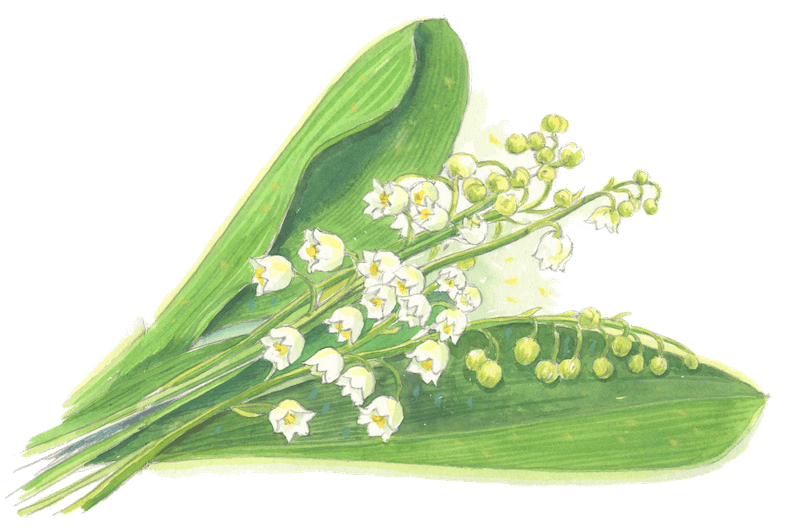The lily of the valley is known as one of Spring’s most punctual of floral harbingers. The timing of the muguet’s bloom is, in fact, so reliable that the French have practically set their calendars by it for centuries.
Read on to learn about how France commemorates their May 1st labor day holiday with little bouquets of muguet (or lily of the valley) flowers featured in the May/June 2023 Edition of the magazine to be released on Monday, May 1st!
SUBSCRIBE TO THE MAGAZINE
Among the many rites that accompany the arrival of Spring in France, the giving and receiving of le muguet – lily of the valley – on May 1st remains one of the country’s most enduring and popular traditions. But while most French today associate the muguet with the annual Labor Day holiday, the history of this ritual runs much deeper.

With its dainty bell-shaped blossoms, vibrant green leaves and delicate perfume, the muguet (pronounced ‘moo-gay’) has been held as a symbol of good luck in Europe since the Middle Ages, when the flower was first introduced by traders, who brought them from Japan. The cool, wet climate of western Europe proved to be particularly hospitable to the plant, which quickly propagated across the continent, especially in its sun-dappled woodlands.

In France, the practice of offering le muguet on May 1st is said to date back to the 16th century. Back then, the date (rather than St. Valentine’s Day) was considered the official festival of love and friendship – and to celebrate, people would exchange flowers. On May 1, 1561, it is said that a young Charles IX – who was just 10 years old at the time – was gifted a bouquet of the small white blooms from one of his knights as a good luck charm. The king was so moved that he decreed that the blooms should be distributed every year to all the ladies of his court. Word soon spread, and the practice was embraced beyond the palace gates.

Though the muguet-giving tradition continued for some years beyond Charles’s reign, it eventually faded out of fashion – and by the time of the French Revolution, in 1789, it had completely died out. Nonetheless, during the 18th and 19th centuries many French communities continued to organize dances on May 1st – known as les bals du muguet. The annual event was a rare occasion for unmarried young men and women to socialize in public without their families’ formal permission.
It wasn’t until the turn of the 20th century that the giving of muguets experienced an unexpected, yet quintessentially French renaissance: At a gala and fashion show organized by several Paris couture houses on May 1, 1900, designers distributed the flowers to their employees and customers. The gallant gesture was repeated the next year, and the next… lofting the humble muguet to the height of popularity. (Decades later, the flower also famously became a fetish of Christian Dior, who incorporated lilies into many of his designs and was often seen sporting a fresh sprig on his lapel.)

It turns out the Parisian glitterati of the Belle Époque were not the only ones to submit to the muguet’s charms, however. These years coincided with the peak of the Industrial Revolution and a growing international movement to defend the rights of the working class. Many countries around the world adopted May 1st as International Workers’ Day as a celebration of laborers and trade unions.
Today, the Fête du Travail is one of France’s most widely observed public holidays. In the days leading up to May 1st, you will see lily of the valley sprouting from the storefronts of florists in every town and village, or even at the local supermarket checkout. And on the day itself, it will seem like everyone – be they out joining the Labor Day marches or just getting together with friends for lunch – will have a sprig of muguet in their hand.

If you’d like to join in this tradition yourself, you can try planting muguet in a shady corner of your garden, where they will invariably sprout in the first days of May. When given proper care, these perennials can spread out into a lush groundcover, although the blooms normally only last a few weeks. When offering them as a gift, avoid going big: a proper bouquet of muguets is meant to be just three branches. Oh, and if possible, those branches should have precisely 13 blooms – because in France, believe it or not, this is considered to be a lucky number!
To see this article in print – and other articles featuring historical culture, spring recipes, French gardens, and more – be sure to subscribe to the My French Country Home magazine!

